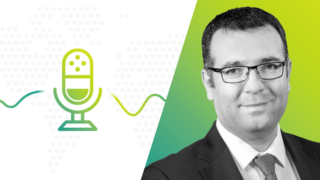By Terence Narine, FCIA
The content of this article should not be construed as an actuarial opinion or guidance on actuarial work. I do not have experience in some of the practice areas mentioned in this article, so my comments are made from the perspective of someone outside these areas.
A black swan event can be viewed like the 1-in-200-year flood that we risk managers agonize over; a rare event that happens less than once in a lifetime. For the actuarial and statistical types among us, it can be found above the 95th CTE distribution in the tail. Investopedia states the following about black swan events:
- A black swan is an extremely rare event with severe consequences. It cannot be predicted beforehand, though many claim it should be predictable after the fact.
- Black swan events can cause catastrophic damage to the economy, and because they cannot be predicted, can only be prepared for by building robust systems.
- Reliance on standard forecasting tools can both fail to predict and potentially increase vulnerability to black swans by propagating risk and offering false security.
When we look at the COVID-19 pandemic and the oil shock, are we seeing black swans? Check. Check. Check.
Risk managers have generally considered contagion in their work. Actuaries have for some time run ORSA scenarios in their risk models where two stresses show up concurrently. An example of such a stress would be a low interest rate environment and a spike in mortality or morbidity occurring at the same time. However, this scenario seems different.
We’ve got a health crisis, the COVID-19 pandemic, creating a financial crisis. The economic crisis has been driven by shelter-in-place and stay at home orders. Businesses are shuttered and unemployment is spiking. The stock market has fallen by more than 20% from its highs in February of 2020. Oil futures is trading below $20 at the time of this writing. The current environment can be characterized as low interest rates, potential upwards movements in underlying risks including mortality, morbidity, and lapse, combined with depressed assets and high unemployment. Kudos to any risk managers who considered such a scenario in their past modeling.
What does this black swan event mean for actuarial practice areas?
Mortality
For those who recover from the virus, the recovery period seems to be very short. As such, one would expect little impact on morbidity rates related to short-term disability products. Long-term disability products sold primarily to working-age adults should similarly not be impacted. Supplemental health products sold in Canada and through worksite marketing in the US may see an uptick in claims given the exposure from these products.
The lower end of the model suggests 100,000 to 200,000 deaths in the US. I’m inclined to put more validity in the lower numbers. Canada’s national health care system and prior experience with SARS may reduce the relative number of deaths per capita compared to the US with its mix of private and public health care. At the time of this writing, we are nowhere near the lower bound of the above numbers. Social distancing appears to be flattening the curve.
Is there evidence social distancing works? Perhaps the earliest example of its effectiveness was the Spanish Flu of 1918–1919. The US Surgeon General at the time asked local authorities to stop large gatherings in affected areas. The mayor of St. Louis heeded the advice. The mayor of Philadelphia did not. The mortality curves of the two cities during that outbreak bears evidence as to the efficacy of social distancing. St. Louis was able to flatten its curve. Since the current thinking is that the virus is transmitted by droplets in the air, reason would indicate that separation between individuals would slow or prevent the transmission.
When put in perspective, 60,000 to 80,000 people die from the flu worldwide each year. Certainly, these flu deaths must be included in the latest available mortality rates. Therefore, an additional 60,000 deaths in the US or 5,000 in Canada may have an insignificant impact on existing mortality rates. The exception would be older lives where large relative distributions of mortality are occurring with this virus. We may also see some modification in mortality improvement factors particularly at older ages. However, this may be short term until a vaccination can be found, hopefully in the next few years. Current reports suggest male mortality is greater than female mortality. This may be explained by a tendency for men to seek treatment later as suggested by medical personnel.
Life reinsurers have accumulated larger exposure to mortality risk as direct companies have ceded risk to them. However, most are well capitalized and should be able to weather this presumably temporary storm.
Much is known about infection and mortality rates for the Spanish Flu of a century ago. The same can be said to a lesser extent for SARS, Ebola, HIV, MERS and the Avian flu. That’s because significant time has passed to assemble those statistics. With all the modern technology available, it would seem that rates of infection and mortality could be much easier assembled in real time as COVID-19 emerges. However, the challenge with obtaining accurate mortality rates is of course the denominator. Since testing for the virus is currently limited to those with symptoms or suspected exposure, it’s harder to get a gauge at any one point of time as to how many people are exposed in the community or at large. A testing sample in the population at large of those with antibodies in their blood stream would provide an estimate as to what percentage of the population is infected. This assumes an appropriate antibody test can be found. In a theoretical world, this would provide the needed denominator.
There is some talk at this time of collecting contact tracing information through mobile phones or fitness trackers. The issue remains, however, that about 25% of people with the illness are believed to be asymptomatic. Without widescale testing, there is no way to tell for sure who has been infected.
Once we have the ability to determine infection rates in the general population, with time people may be able to get back to their daily routines, including filling up their cars with gas and traveling. This may mitigate some of the oil shock. One interesting outcome is that since many people are sheltering in place, roads are relatively empty. This should allow for a reduction of automobile deaths during this pandemic.
The final number of deaths related to COVID-19 may never be known. There is anecdotal evidence from Italy and New York of people dying at home because medical intervention did not reach them in time. These people are apparently being missed in the current death counts published on certain websites. Also, the open question of whether someone died of COVID-19 or another underlying disease or illness will mean that the true statistics will be hard to come by. This scenario is referred to in the health community as co-morbidity.
Morbidity
For those who recover from the virus, the recovery period seems to be very short. As such, one would expect little impact on morbidity rates related to short-term disability products. Long-term disability products sold primarily to working-age adults should similarly not be impacted. Supplemental health products sold in Canada and through worksite marketing in the US may see an uptick in claims given the exposure from these products.
One area where there might be a claim spike could be mental nervous claims under disability insurance. As people are encouraged to self-isolate or quarantine under the current shelter-in-place guidelines, mental illness may increase. Insurers may also have to consider adjustments to return-to-work benefits as many workplaces are temporarily closed.
A second area of concern is long-term care insurance. The media is full of stories of nursing homes where clusters of deaths and infections have occurred. Unfortunately, nursing homes and assisted living facilities have aged residents, many with underlying health conditions. Anecdotally, some people are removing their aged parents from nursing homes. This may produce a reduction in benefits and claims during this pandemic.
Life insurance
So far, the response from life insurers has been muted. Life insurance companies may have to show flexibility at this time with regards to in-force policyholders just like the banks and P&C carriers have responded. Empathy from life insurers may be the key word here. Offering premium holidays or cessation for limited periods of time may go a long way to keeping policyholders persistent. Insurers may look to reduce loan interest on cash value policies to zero or some lesser amount in order to give policyholders an affordable liquidity option. Dividends on par policies may be impacted.
In contrast, media reports indicate home and auto carriers are responding to the crisis with premium deferrals. ICBC announced recently that several insurers are offering premium holidays and waivers. Ontario has also moved to allow rebates to insured motorists. There is the consumer argument being made that auto insurers should refund some premium since policyholders are driving less if at all. Sales may be hampered in the life insurance market as brokers are challenged with using virtual sales tools to sell policies.
Annuities
The $2 trillion Cares Act approved by US Congress in the last week of March 2019 provided some flexibility to policyholders with regards to withdrawals of benefits under tax qualified annuities. Around the same time, Canada passed legislation allowing owners of RRIFs (Registered Retirement Income Funds, a tax qualified annuity product for retirees) a 25% reduction in required annual distributions in order to provide time for the stock market and those funds to recover. Sales of annuity products may have to occur significantly through online channels. At recovery, there may be a spike in interest rates if inflation increases. This should benefit new policyholders.
Assets
Some assets have taken a beating. There is an expected enhanced risk of default with corporate bonds. This is particularly true for corporate bonds in the oil and gas, retail, hotel, and airline industries. Bond prices have risen as interest rates have collapsed. One clear risk in the future is that maturing bonds may have to be re-invested in lower yielding assets thus dragging down overall portfolio yield. On the equity side as previously mentioned, the stock market has fallen roughly 20% at the time of this writing.
Unemployment insurance
Few companies have ventured into the risky realm of unemployment insurance. There are some limited offerings in both the US and Canada. With the filings for unemployment insurance spiking in the last two weeks, companies offering these products could see large risk exposures.
Travel insurance
Travel Insurance may be one of the first products to be impacted by COVID-19. As governments in North America and around the world began limiting air travel and closing borders in the month of March, several carriers responded by shutting down sales.
Expert witness work
The media has used the term “COVID divorce” to suggest an increase in divorces as people become confined due to lock-down orders. If so, it would indicate an increase in work for expert witness actuaries but for all the wrong reasons.
Regulators and rating agencies
It’s unclear at this point how regulators around the world will respond. One rating agency has made an assumption of 5% infection rate and 1% mortality. Their stress test is 15% infection and 0.75% mortality.
Exclusions
It would probably reflect poorly on well-capitalized insurers if they used exclusions to get out of paying claims. Many policies contain exclusions related to war or war zones. Will insurers use these provisions as an out if claims spike beyond reasonable levels? Some in the media have described this situation as World War V (as in Virus). Others comment we’re at war.
Claims
Anecdotally, there have been some comments that claims payments have slowed down. Claims examiners are getting used to the new normal of working from home. Some of this may be related to the slowdown in mailing claims forms and getting evidence. Other reasons could include the learning curve in getting used to the new virtual reality.
Predictive models and AI
So far, the models used in the US, Canada, and elsewhere have produced a range of results. Some seem unreasonable in terms of the upper limits on mortality and infection that they’re predicting. The conventional wisdom is that the model is only as good as its assumptions. Right now, obtaining valid assumptions is proving challenging in this emerging scenario.
Interestingly, the Blue Dot model developed in Toronto was able to predict the disease emerging from Wuhan China nine days before the WHO released its statement on it. The model used AI and thousands of data points to make its predictions. Data came from such sources as public health organizations, digital media, global airline ticketing data, livestock health reports, and population demographics. The global airline ticketing data was used to predict where next the outbreak would occur.
One positive outcome from an actuarial modeling perspective is that many insurers would have already stressed their mortality and morbidity assumptions under annual ORSA exercises. If there was a way to combine results from various insurers in an aggregate fashion, it may paint a picture of how strong the industry as a whole stands against this pandemic threat.
Risk management and big data
The 13th Annual Survey of Emerging Risks sponsored by the CAS, SOA, and CIA released just as the health crisis was breaking shows that pandemics did not make the list of top five key risks. However, pandemics did rank high in undervalued risks. Certainly no one, not even governments, were able to predict the extent to which this pandemic would impact the modern world. And no one, not even big data, will be able to predict with laser precision when the next pandemic will occur, although we can say that another one will raise its ugly head at some point.
Actuaries are charged with predicting the future. Which begs the question: did actuaries get it wrong? Or was this the black swan that no one saw coming?
When this pandemic is over, there will be a lot of data that will emerge. Hopefully, more accurate models using big data can be used for the next time a black swan such as this one arrives.
Black swans swim away
In closing, I would be remiss if I bypassed the pain and suffering that this pandemic has caused. No one should lose their lives simply for going to work or trying to carry on with their daily lives. The esoteric routines of actuarial work pale in comparison at this time.
Black swans do exist. Maybe the greatest takeaway from this situation is that we as actuaries have to rely on the doctors and epidemiologists on the front lines to guide our knowledge and thinking with respect to this pandemic. Like economists, statisticians, and other professionals, we will require the medical professionals to assemble the data we need to do our work. Statistics like R0 (“R naught” – loosely the number of people one contagious person infects) are not part of the actuarial lexicon for many of us. However, many of the health personnel are also trying to figure out the assumptions surrounding this black swan event given the ever-changing model predictions. The tsunami will end one day, and the black swans will swim away.
Terry Narine is the CIA’s delegate to the IAA’s Health Committee.
This article reflects the opinion of the author and does not represent an official statement of the CIA.
This article originally appeared on the CIA COVID-19 Hub.





